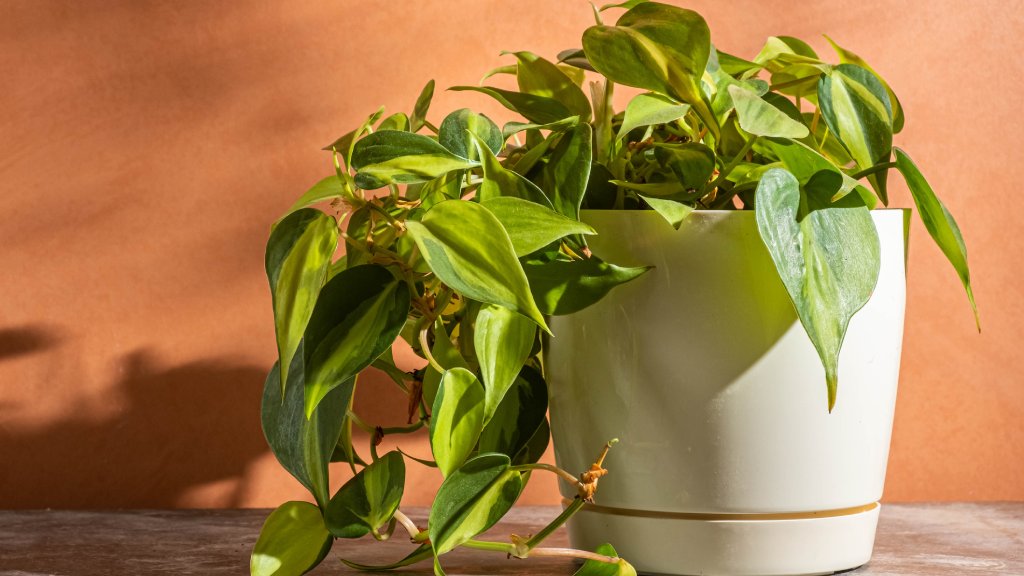2024 Plant Of The Year: Why Experts Say Philodendron Is The “It” Plant Of The Year
We aren’t surprised that philodendron was designated the plant of the year. Versatile, easy-care and lovely, it’s the houseplant of the year 2024!


I know why philodendron has been named Plant of the Year I once had a split-leaf philodendron that grew over the fireplace and across to the next wall. It was spectacular. I have always loved this houseplant in particular. It is low maintenance, produces glossy leaves, and grows rapidly in the right conditions.
Philodendrons are native to tropical America where they grow as understory plants. There are nearly 500 accepted species of this common plant. Philodendron was named by a popular floral chain as the plant of the year 2024. They named it Houseplant of the Year due to its spectacular foliage. But the Philodendron doesn't need a title to be special. Its vibrancy and lushness add a verdant touch to a home, office, or other area.
What Makes Philodendrons So Special?
With so many varieties from which to choose, Philodendrons are perfect for any space. The plants range from bearing small heart-shaped leaves, to varieties whose foliage spans 3 feet (.9 m.). There are even species with cut leaves and those with brightly-hued foliage and/or veins. The leaves may be leathery or softly velveted.
There are 2 divisions of this plant, climbing and non-climbing. The climbing varieties scramble up trees in their native regions, while non-climbers are also called self-heading. This means they’re upright and have dense leaves that conceal the stems. Climbing houseplants look especially attractive trained to a trellis, moss pole, or in a hanging container.
Caring for Philodendron
This plant of the year is prized for its unfussy nature. It needs indirect sunlight which mimics the dappled sun it would get in nature. Away from western or southern windows, or by a gauze curtain is perfect. They will tolerate low lighting like that found in office spaces. Daytime temperatures of at least 75 F. (24 C.) and nighttime temps of 65 F. (18 C.) are ideal.
Philodendron plants have no cold tolerance but can go outdoors in a shady location in the summer. Keep your plant’s soil moist but not boggy. Feed with a houseplant food diluted by half every other watering in the growing season. The broad leaves tend to get dusty, so put the plant in the shower every once in a while to gently clean them.
Propagating Philodendron
Since these are such special plants, it's only natural to want more than one. Propagating philodendrons that trail is the most successful. Remove a stem with several healthy leaves and stand it in a glass of water. Change the water frequently. Pot it in potting soil when it has a healthy batch of roots. They may also be grown by air layering and some species produce offsets which may be divided away from the parent plant. Most plants available for purchase are propagated from cuttings in America in greenhouses.
Sign up for the Gardening Know How newsletter today and receive a free copy of our e-book "How to Grow Delicious Tomatoes".
Common Types of Philodendron
Climbing
- Heart Leaf (Birkin, Brasil, Areum)
- Red Leaf ( Black Cardinal, Pink Princess)
- Fiddleleaf (deeply cut leaves)
- Whipple Way (creamy pointed leaves with green splotches)
- Ring of Fire (orange undersides and speckled uppers)
- Firebird (leaves are half green, half orange)
- Silver Splash (maroon leaves with silver splashes)
Non-climbing
- Zanadu (deeply cut leaves into fine leaflets)
- Congo (oval green leaves)
- Atom (softly noded leaves with white veins)
- Imperial Red (burgundy red leaves)
- Prince of Orange (orange splotches on deep burgundy leaves)
- Moonlight (almost lime green leaves)
- Congo Rojo (oval green leaves with red stems and veins)
Why Add a Philodendron to Your Plant Collection
Although the plant was first noted in the 1600s, it wasn’t named until nearly 200 years later. The name is from the Greek “philo” which means love, and “dendron” which means trees. Therefore it is a tree lover, an apt description for a plant that will wind around larger plants. The plants are epiphytes and will not harm the tree, but will simply use it for stability and structure.
Many varieties produce aerial roots which gather nutrients and water from the air. The many varieties and ease of care are two of the many Philodendron benefits. Their addition in the home provides a tropical feel and a sense of the outdoors brought right in through our doors. And since they don’t demand a lot of time and energy, they are the perfect way to perk up a room without a lot of fuss.

Bonnie Grant is a professional landscaper with a Certification in Urban Gardening. She has been gardening and writing for 15 years. A former professional chef, she has a passion for edible landscaping.